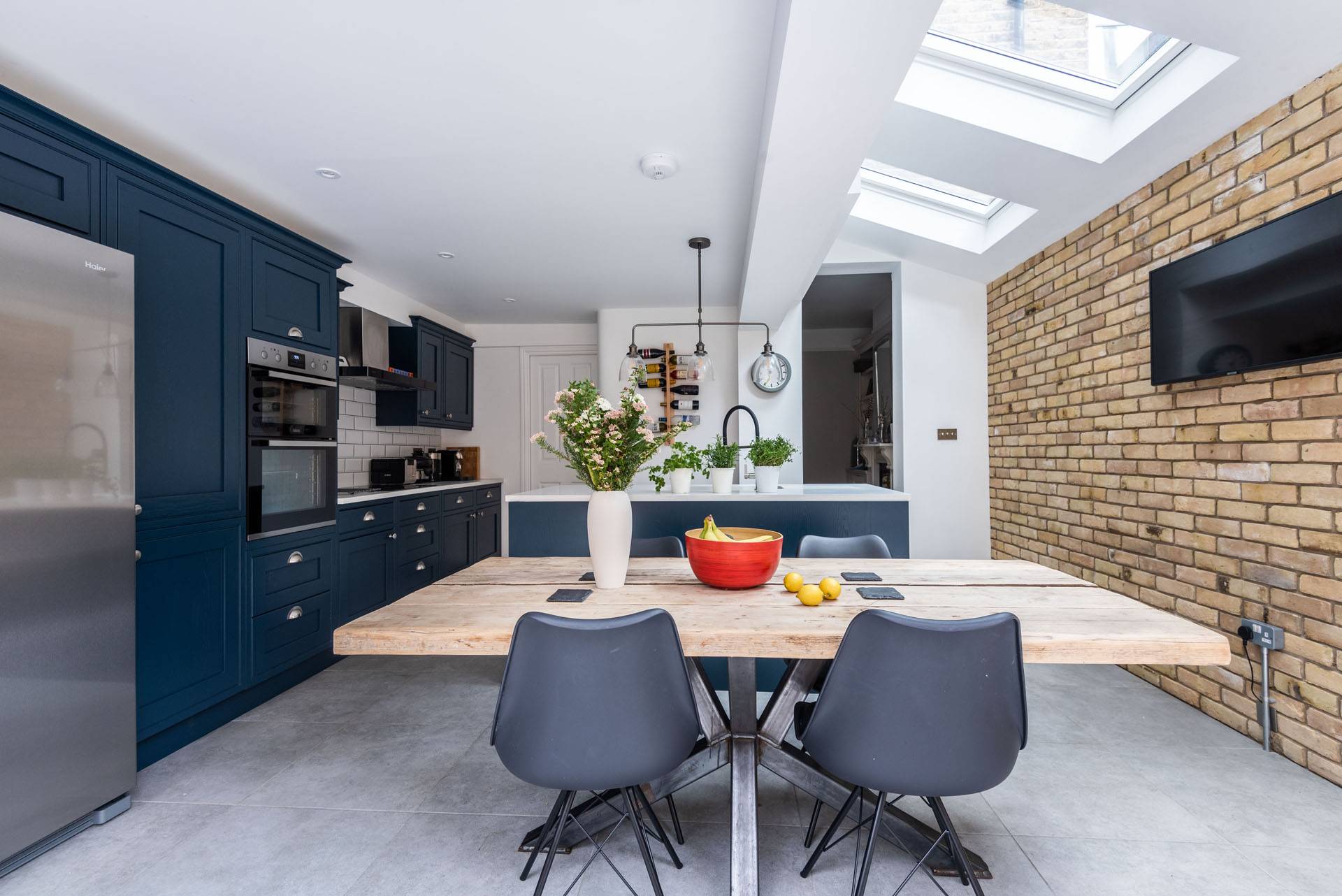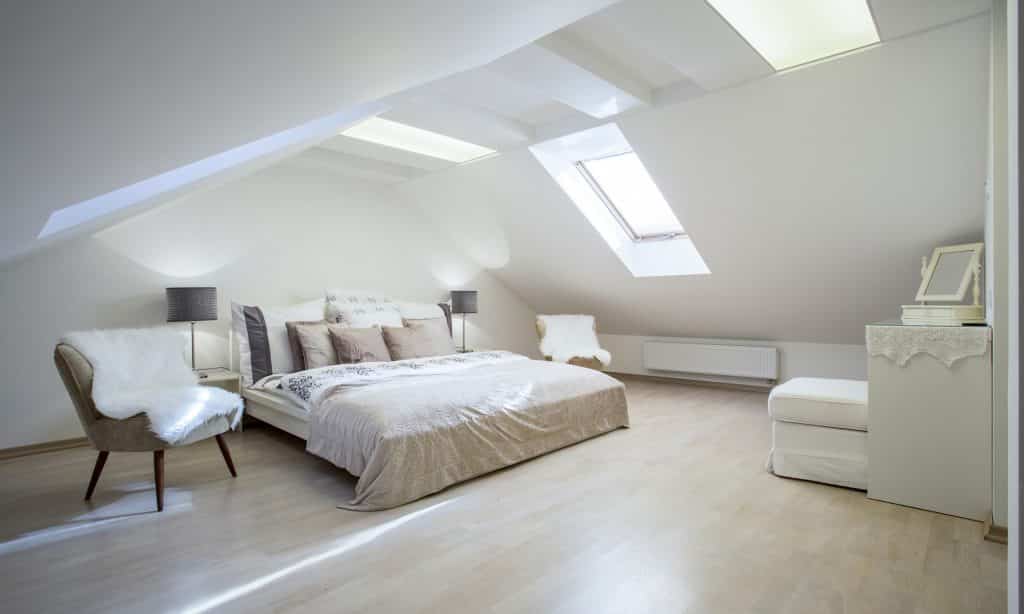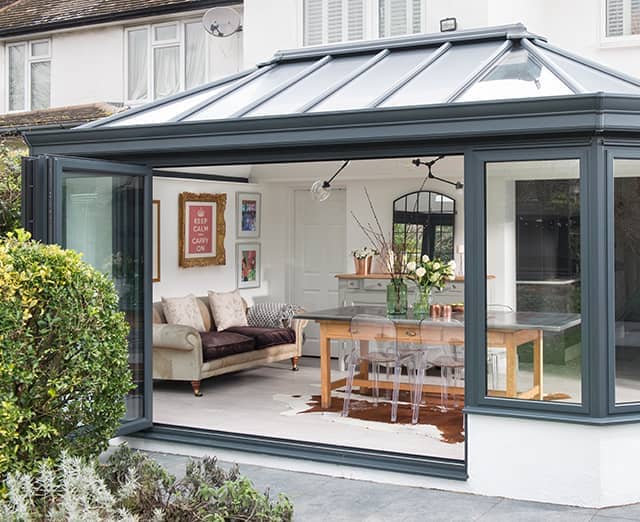
20 Dec OUR TOP 7 WAYS TO ADD VALUE TO YOUR HOUSE
1. Convert your garage to living space
Potential Value Added: 15%
If your garage isn’t being used to house a car, it could make sense to convert it into a living space – especially if you have parking space outside.
Your first step should be to check that your garage is suitable for conversion and whether you need planning permission. In many cases, the work involved in converting a garage will be classed as permitted development, so you won’t need planning permission, but always check with your local planning authority.
A garage conversion is always subject to building regulations to ensure it’s structurally sound. You can use your local council’s building control service or an approved independent inspector, who will make several visits during the conversion to check that key areas (such as drainage, electrics, walls and the roof) comply with regulations.
2. Extend the kitchen with a side-return extension
Potential Value Added: 15%
A side return is a narrow alley that runs adjacent to the kitchen in a typical terraced or semi-detached house. Extending the kitchen into the side return and to the full width of the rest of the house means you gain valuable space and can also improve the layout.
A single-storey side-return extension will usually be classed as permitted development, provided you meet certain limits and conditions. For example, it must be no more than 4m high and no wider than half the width of the original house.
You’ll still have to comply with building regulations, and work will be inspected at key stages of the build, either by the local authority building department or by an approved independent inspector. Once your extension is finished, and presuming it’s deemed to comply with the regulations, you’ll be given a completion certificate.
If you’re thinking about a side-return extension, remember that you could lose windows and the light they’d bring in. Roof lights over the extension will fix this, or you could install a partially or fully glazed roof to keep the space light and airy.

3. Loft conversion to add a bedroom
Potential Value Added: 15%
An extra bedroom can add up to 15 per cent to the value of your home, especially if it’s a loft conversion with an en suite bathroom. Most lofts can be converted, but it’s worth getting an architect or builder to double-check before you start.
Once you start planning, you’ll need to get to grips with the types of conversions available. Options range from a roof light conversion, which needs the least amount of structural work and so is the most cost-effective, to a more expensive mansard conversion. Here, one or both slopes of the roof are replaced with a new structure with steeper sides and an almost flat roof.
Mansard conversions generally need planning permission, but the majority of loft conversions are considered permitted development. Check with your local planning authority as there are some complex rules: for example, you need to apply for planning permission if you want to extend your roof space by more

4. Increase living space with a conservatory
Potential Value Added: up to 10%
If you want to feel closer to nature, a fully glazed conservatory will merge indoors with outdoors. To get started, think about how you want to use the space and whether a modern or traditional style will be best for your home and lifestyle.
The biggest part of your conservatory will be the glass, so explore your options carefully. While double glazing is the minimum standard permitted by building regulations, there is a whole host of glazing options available, including solar control glass and self-cleaning glass. Again, think about which will suit your lifestyle and your home.
There are also options to consider when it comes to the frame. The material you choose will directly affect the performance of the conservatory – uPVC, timber and aluminium frames all have different qualities, so do your research and ask experts for advice.
Adding a conservatory to your house is considered to be permitted development provided you meet various limits and conditions, but don’t forget that building regulations are a separate matter. The majority of conservatories are exempt but there are circumstances when you will need to make an application. For example, if you want to remove the doors or wall linking the conservatory to your house, you’ll have to prove that your conservatory is as energy efficient as the rest of the house.
5. Apply for planning permission
Potential Value Added: up to 10%
If you’re thinking of buying a property and adding to its value through extensions or major improvements, check whether you’re likely to get planning permission. After all, yield calculations based on bigger square footage are worthless if you can’t get it.
6. Kerb and garden appeal
Potential Value Added: up to 10%
Garden space is limited in London, so if you’ve got it, make sure you’re making the most of it, especially when you’re planning to sell. A deck or patio can transform a garden into an entertaining space, and when designed as an additional room, a summer house can also add to the property value.
First impressions are essential, so if you’re selling, give your home some kerb appeal by with a lick of paint, a new door and shining ironmongery. Tidy up the garden by mowing the lawn and sweeping up leaves.
7. Get a new bathroom
Potential Value Added: 3-5%
A new bathroom will certainly increase the value of your property – but it can be an expensive investment. Fortunately, it’s possible to make updates on a budget.
To keep the price down, keep your existing layout. Moving sanitaryware might mean relocating soil pipes and water inlets, which will add to your costs. Updating your shower enclosure? Framed enclosures tend to be cheaper than frameless models. Choose an exposed shower rather than a concealed model: these cost more to install because the pipes will need to be chased into the wall.
Similarly, wall-hung sanitaryware is generally pricier than floor-mounted versions. This is because the cisterns and brackets will need to be concealed within the walls. Save even more money by choosing a bathroom suite rather than purchasing individual pieces. And finally, keep an eye out for seasonal sales.
